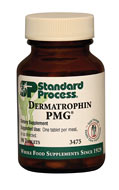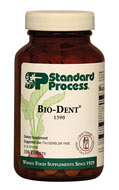Medical Skin Problems

|
we want instead of the ones we mistakenly assume we are stuck with.” Deepak Chopra |
Your skin acts as a protective barrier that protects delicate tissue, nerves and organs from environmental exposure. Because of this, it is exposed to several harmful organisms and substances, like germs, bacteria, chemicals, pollutants, allergens and so on. There are more than 7 million pores on your skin and it is important for you to follow strict hygienic measures, so that your skin stays clean and your pores remain open at all times. Almost all of us do this by taking showering or bathing daily. A lack of adequate hygiene could increase your risks of various skin diseases significantly.
Many skin diseases are caused by environmental factors like the presence of bacteria or viruses. However, genetic factors could also contribute to the development of a number of problems. Some of the skin diseases are relatively minor, as they do not lead to any pain or discomfort. However, in several instances, a skin disease could be quite serious and perhaps even life threatening. Some diseases are barely noticeable, whereas others may cause embarrassment because they bring about drastic changes in the appearance of the skin. Skin diseases can be mainly of four types:
Bacterial Skin Diseases
A bacterial skin disease occurs when bacteria enter your skin, through a cut or a break. Most of the bacterial skin diseases in humans are caused by the Staphylococci or staph bacteria. Studies indicate that bacteria belonging to this kind are responsible for more than 40% of all skin diseases in humans. Some of the most common examples of bacterial skin diseases include: Acne vulgaris, Impetigo, Acne rosacea.
Viral Skin Diseases
Viral skin diseases, like the name suggests are caused by certain types of viruses. While these diseases may last for a short period of time, the symptoms can be a lot more severe and uncomfortable. Some of the most common example of viral skin diseases or rather viral infections that cause skin rashes include: Chicken pox, Measles, Herpes, and Warts Verrucas.
Fungal Skin Diseases
The presence of microscopic fungi on the skin can lead to fungal infections in case there is an overgrowth. These diseases are not usually a cause for concern, but they could become a problem, if they are not controlled in time. Given below are some of the most common types of fungal skin diseases: tinea corporis, manus, pedis, folliculitis, boils and furuncles
Congenital Skin Diseases
These are common types of skin diseases affecting people of all ages. They are usually caused by genetic or environmental factors. Given below are some of the most common types of congenital skin diseases: Dermatitis, Psoriasis, and Eczema.
While these are the most common types of skin diseases, there are others too. Skin cancer is an example of other types of diseases affecting the skin too.
- Symptoms of skin disease and sometimes are not visible
- The Signs of Skin Cancer
- Everything you need to know about Acne
- What are some clues to help you figure out whether or not your acne is related to fluctuations in your hormones
- Everything you need to know about Psoriasis
- Everything you need to know about Shingles
- Everything you need to know about Eczema












